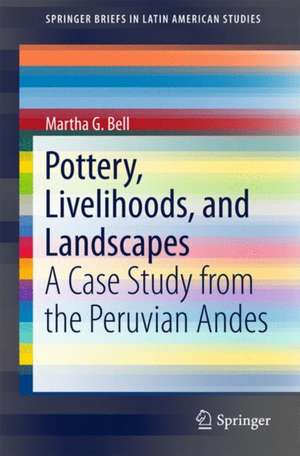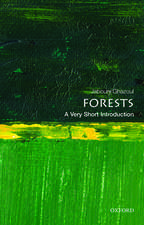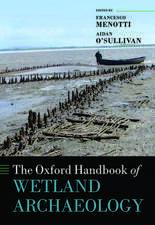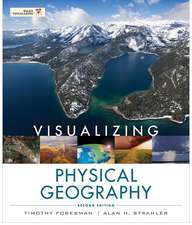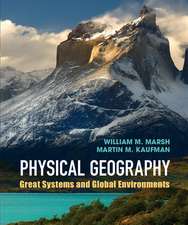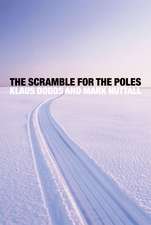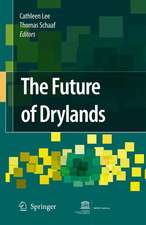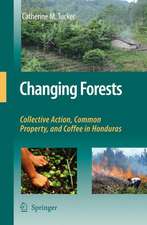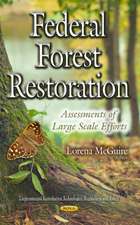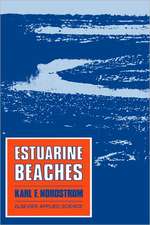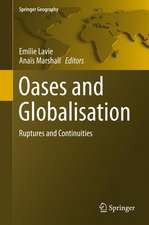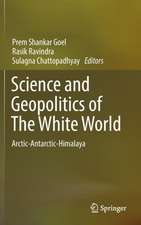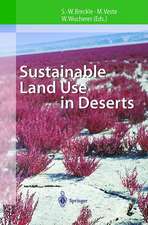Pottery, Livelihoods, and Landscapes: A Case Study from the Peruvian Andes: SpringerBriefs in Latin American Studies
Autor Martha G. Bellen Limba Engleză Paperback – 16 mar 2017
Pots are mainly bartered for food crops within a non-monetary peasant economy distinct from the “conventional” market. This practice is an important food source for pottery traders; thus trader livelihoods are placed at the center of this qualitative study of pottery distribution. Of primary importance are: 1) the decision-making processes surrounding exchange activities, 2) how exchange choices produce distinct spatial patterns, and 3) how the marketing of pots impacts livelihoods.
Preț: 351.90 lei
Nou
Puncte Express: 528
Preț estimativ în valută:
67.36€ • 73.19$ • 56.62£
67.36€ • 73.19$ • 56.62£
Carte tipărită la comandă
Livrare economică 17-23 aprilie
Preluare comenzi: 021 569.72.76
Specificații
ISBN-13: 9783319523309
ISBN-10: 3319523309
Pagini: 75
Ilustrații: XVI, 89 p. 15 illus., 14 illus. in color.
Dimensiuni: 155 x 235 x 7 mm
Greutate: 0.2 kg
Ediția:1st ed. 2017
Editura: Springer International Publishing
Colecția Springer
Seria SpringerBriefs in Latin American Studies
Locul publicării:Cham, Switzerland
ISBN-10: 3319523309
Pagini: 75
Ilustrații: XVI, 89 p. 15 illus., 14 illus. in color.
Dimensiuni: 155 x 235 x 7 mm
Greutate: 0.2 kg
Ediția:1st ed. 2017
Editura: Springer International Publishing
Colecția Springer
Seria SpringerBriefs in Latin American Studies
Locul publicării:Cham, Switzerland
Cuprins
Preface.- Chapter 1: Introduction.- 1.1 Introduction.- 1.2 Approaches to Rural Livelihoods and Exchange Systems in the Andes.- Chapter 2: Context and Research Design.- 2.1 Pottery Production in Piura.- 2.2 Research Methods.- Chapter 3: Networks of Pottery Exchange.- 3.1 Methods of Pottery Distribution and the Case of San Bartolomé de Olleros.- 3.2 Trading Trips.- 3.3 Community-Based Exchange.- 3.4 Visiting Customers.- 3.5 Annual Fairs.- 3.6 Itinerant Potters & Peonage.- 3.7 Urban Markets.- Chapter 4: Negotiating the Exchange Landscape.- 4.1 Kinds of Places, Kinds of Food: The Geography of Agriculture in Piura.- 4.2 Exchange Rates and Methods of Measurement.- 4.3 Potters’ Life Cycles and Trade Practices.- Chapter 5: Pottery Exchange and Livelihoods: An Assessment.- 5.1 The spatiality of pottery production and exchange as a livelihood activity.- 5.2 Significance for Livelihood Studies and Andean Studies.-5.3 Significance for Ethnography and Archaeology of Pottery.- 5.4 Final conclusions.
Notă biografică
Martha G. Bell is a lecturer in geography at the Pontifical Catholic University of Peru's Department of Humanities. She teaches courses on climate change, natural disasters, urban geography and geographic thought.
Textul de pe ultima copertă
This book describes the pottery trade activities of the residents of the community of San Bartolomé de los Olleros in Piura, Peru. Based on extensive interviews with potters and traders, it explains why the barter of pots continues to be practiced, and explores how pottery production and exchange practices may now be changing. The book provides a unique and detailed analysis of the interconnections between handicraft production, rural trade networks, and agriculture in an Andean context.
Pots are mainly bartered for food crops within a non-monetary peasant economy distinct from the “conventional” market. This practice is an important food source for pottery traders; thus trader livelihoods are placed at the center of this qualitative study of pottery distribution. Of primary importance are: 1) the decision-making processes surrounding exchange activities, 2) how exchange choices produce distinct spatial patterns, and 3) how the marketing of pots impacts livelihoods.
Pots are mainly bartered for food crops within a non-monetary peasant economy distinct from the “conventional” market. This practice is an important food source for pottery traders; thus trader livelihoods are placed at the center of this qualitative study of pottery distribution. Of primary importance are: 1) the decision-making processes surrounding exchange activities, 2) how exchange choices produce distinct spatial patterns, and 3) how the marketing of pots impacts livelihoods.
Caracteristici
Offers a unique detailed description of pottery as a livelihood activity in Northern Peru Includes analysis of handicraft production in relation to the regional geography of agricultural production Based on detailed interviews with potters and pottery traders Provides findings relevant for geography, anthropology, and archeology Presents color maps and photographs of pottery production and exchange Includes supplementary material: sn.pub/extras
